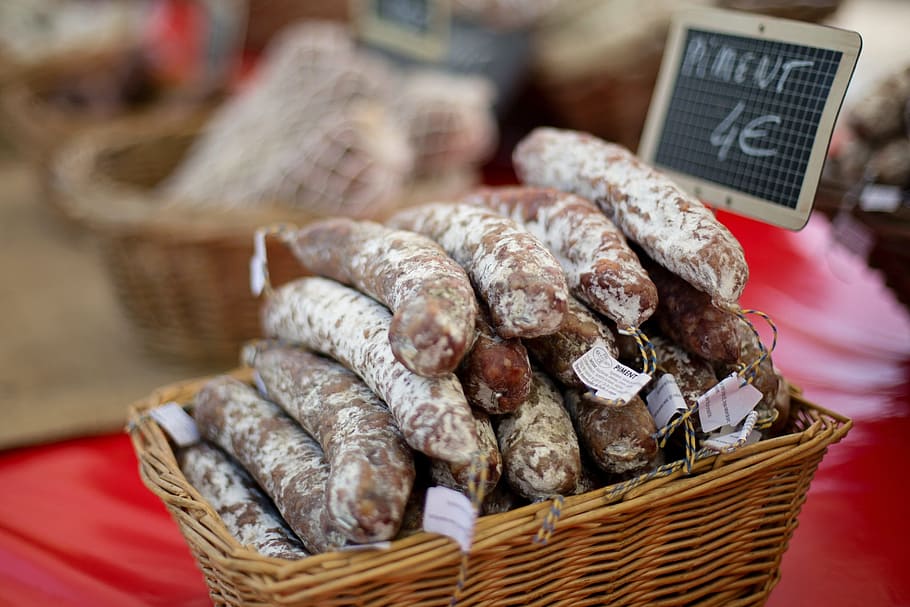In the bustling rhythm of modern life, convenience often dictates our meal preparations, leading many to wonder about the safety and techniques of cooking frozen foods directly from their icy state. Among these culinary queries, a common one surfaces with regularity: “Can you cook sausages from frozen?” This question not only touches upon the practical aspects of cooking but also delves into concerns regarding food safety, quality, and preservation of flavor. Our article, aptly titled “Can You Cook Sausages from Frozen,” is crafted to address these inquiries head-on, providing a thorough exploration backed by culinary science and expert advice.
Embarking on this exploration, we draw upon a wealth of knowledge from seasoned chefs, food scientists, and safety standards to guide you through the dos and don’ts of cooking frozen sausages. This isn’t just about answering a yes or no question; it’s an invitation to understand the hows and whys, ensuring that you can enjoy your meals not only with ease and convenience but also with the confidence that you’re adhering to best practices in food safety and preparation.
Our aim is to demystify the process, presenting you with step-by-step methods that preserve the integrity of the sausages while ensuring they’re cooked to perfection. From grilling and baking to pan-frying and boiling, we cover a range of techniques that cater to different preferences and kitchen setups. This guide is designed to not only pique your curiosity but also enhance your culinary skills, encouraging you to explore the versatility of cooking with frozen sausages.
Whether you’re a busy parent looking for a quick dinner solution or a culinary enthusiast eager to understand the science behind frozen foods, this article is tailored to enrich your knowledge and expand your cooking repertoire. Join us as we delve into the world of frozen sausages, unlocking the secrets to delicious, safe, and convenient meals that promise to transform your approach to cooking with frozen ingredients.
Can You Cook Sausages From Frozen?

Yes, you can cook sausages from frozen using various methods such as baking, boiling, or air frying. Alternatively, some types of sausages can be cooked from frozen on the hob using a little bit of oil. Whichever method you decide to go for, make sure that the sausages are piping hot before eating.
Cooking Methods
Oven Method
Baking sausages in the oven allows for easy, hands-off cooking directly from frozen. To oven cook frozen sausages:
- Preheat oven to 400°F. Line a rimmed baking sheet with aluminum foil and brush lightly with oil or cooking spray. This helps prevent sticking.
- Arrange sausages on prepared baking sheet, leaving space between each link to allow for even browning.
- Bake for 18-22 minutes for average sized pork sausages until browned on the outside. Then flip each sausage and bake for another 8-12 minutes until fully cooked through.
- To check for doneness, insert an instant read meat thermometer into the thickest part of a sausage. It should reach 160°F for pork varieties or 165°F for poultry sausages.
- For larger, thicker sausages like bratwurst, increase oven time to 25-30 minutes per side. Bake smaller links like breakfast sausages for less time, around 12-15 minutes per side.
- Allow sausages to rest 5 minutes before serving. The internal temperature will continue rising a bit as they cool slightly.
Grilling Method
The high dry heat of the grill impart delicious charring and flavor when cooking sausages from frozen. Use an indirect grilling setup:
- Preheat grill to medium high heat, around 400°F. Leave one side empty and cook sausages on the other with no direct flame underneath.
- Place sausages on oiled grates to prevent sticking. Close the grill lid.
- Grill for 12-15 minutes, rotating to cook evenly until browned. Check temperature and continue grilling if needed until 160°F internally.
- Lower heat and move sausages directly over the coals if more browning is desired after cooking through. Quickly sear 1-2 minutes per side.
- Allow to rest 5 minutes before cutting and serving.
Pan Frying Method
Pan frying is ideal for cooking a small batch of sausages from frozen, and it allows deglazing the browned bits into a flavorful pan sauce.
- Place still frozen sausages in a skillet and add water to cover halfway up the links. Bring to a gentle simmer over medium heat.
- Simmer 5 minutes to partially thaw. Remove sausages from water and dry thoroughly with paper towels.
- Heat 1 Tbsp oil in skillet over medium high heat. Add sausages and fry until deep golden brown on both sides, around 2-3 minutes per side.
- Check internal temperature, continuing to cook and flipping occasionally until sausages reach 160°F.
- Optional: Deglaze pan with wine or broth, scraping up browned bits. Simmer until reduced. Spoon over sausages.
Additional Cooking Tips
- Choose a skillet or baking pan with some extra space around the sausages. Crowding can lead to uneven cooking.
- Adding a small amount of broth or water to the skillet or baking pan provides moisture for steaming and prevents scorching.
- Browning cooked sausages under the broiler or in a hot pan at the end enhances flavor and texture.
- Halfway through oven baking, brushing sausages with oil or barbecue sauce helps them brown.
Safety Precautions and Hygiene
Proper food handling practices are important when cooking any meat product to avoid foodborne illness:
- Wash hands and prep surfaces before and after handling raw frozen sausages. Prevent cross-contamination.
- Use separate plates and utensils for raw and cooked sausages. Never re-use items touched by raw meat.
- Cook sausages to the minimum safe internal temperature for the type of meat. Check with a food thermometer.
- Refrigerate leftovers within 2 hours and reheat fully to 165°F before serving again.
Thawing Options and Considerations
For the most even cooking, thawing sausages in the refrigerator overnight is ideal. However, cooking from fully frozen is safe and convenient in a pinch. Here are some thawing tips:
- Thaw in the refrigerator over 24-48 hours for best food safety and moisture retention. Place sausages on a plate to catch drips.
- Microwave defrosting is quick but can start to cook the sausages and dry them out if overheated. Defrost at 50 percent power in short increments.
- Cold water thawing for an hour avoids overheating but requires more attention to ensure even thawing. Change the water every 30 minutes.
- Room temp thawing for 1-2 hours speeds the process but allows bacterial growth if left too long. Only leave sausages out for the minimal time needed.
- For pan frying, parboiling frozen sausages briefly to surface thaw before searing works well.
Differences Between Sausage Types
Cooking times and techniques vary slightly based on the size and ingredients in different sausage varieties:
- Pork breakfast sausages are small and cook quickly. Watch closely to avoid over browning.
- Bratwurst and kielbasa need more time due to their large size and can finish cooking over indirect heat.
- Italian sausage, seasoned with fennel, cooks up juicy and benefits from a simmer in sauce.
- Andouille and chorizo have a higher fat content which keeps them moist when cooking.
- Chicken or turkey sausages are leaner and prone to drying out. Brush with oil and cook gently.
Vegetarian or Plant-Based Sausages
Most vegetable-based sausages like soy or bean varieties can also be cooked straight from the freezer using these same techniques:
- Preheat oven or pan spray oil to prevent sticking of extra delicate veggie casings.
- Bake or pan fry frozen veggie sausages until heated through, about half the time of meat sausages.
- Grill over indirect heat, farther from the flames, to avoid charring the outside before the interior is done.
- Internal temp should reach 165°F. Meat substitutes cook faster, so monitor temperature closely.
Serving Suggestions and Pairings
A variety of easy sides, seasonings, and sauces complement different sausage styles:
- Grilled sausages pair well with roasted potatoes or veggies and mixed green salad.
- Sauerkraut, mustard, and beer nicely match brats hot off the grill.
- Italian sausage baked with peppers and onions topped with marinara sauce and parmesan is delicious.
- Serve breakfast links with scrambled eggs, biscuits, and maple syrup for a hearty start to the day.
- Andouille sausage gumbo with tomatoes, okra, and cajun seasoning over rice is a flavorful dish.
Troubleshooting Common Issues

- If sausages burst, the casing overexpanded from cooking too quickly. Thaw first or start with cooler oven/grill temp.
- For uneven browning, use foil strips to cover cooked sections if needed. Rotate sausages and cook gently.
- If interiors are undercooked while outsides are burned, thaw more before cooking and use lower heat.
- Allow resting time after cooking since the center continues heating. Test temperature to confirm doneness.
Nutritional Information
On average, fresh pork sausages contain around 300 calories, 28 grams fat, and 720 milligrams sodium per 3 ounce serving. They are high in protein and also provide some zinc and iron. Chicken and plant-based links are typically lower in calories and fat in comparison. Always check labels for variations between brands and recipes. Moderating portion size is recommended when enjoying high fat meats like sausages.
Storage and Reheating
- Store fresh sausages tightly wrapped up to 2 days in the refrigerator. Freeze for longer storage.
- Cooked sausages keep in the fridge for 3-4 days in an airtight container. Reheat fully to 165°F before consuming.
- Frozen precooked sausages maintain quality for 2-3 months. Reheat straight from frozen in the oven or pan.
- Microwaving cooked sausages leads to a rubbery texture. Use the stovetop or oven to reheat.
FAQ on frozen sausages
Is it safe to cook frozen sausages?
Yes, as long as sausages are cooked fully to the proper internal temperature. Be sure to follow safe thawing and cooking practices.
Should I prick sausages before cooking from frozen?
Pricking is no longer recommended, as it can lead to juices being lost. Sausage casings should expand smoothly when cooked from frozen.
What temperature should frozen sausages reach internally?
Cook until 160°F for pork and 165°F for poultry. Use a food thermometer to verify safe doneness.
Can I refreeze sausages after thawing?
Partially thawed sausages may be safely refrozen, but quality declines after repeated thaw and freeze cycles. Fully thawed sausages should not be refrozen.
How do I prevent sausage from bursting when cooking from frozen?
Thaw first, start with a lower heat, and increase temperature gradually to allow the sausage time to heat through before the casing overexpands.

